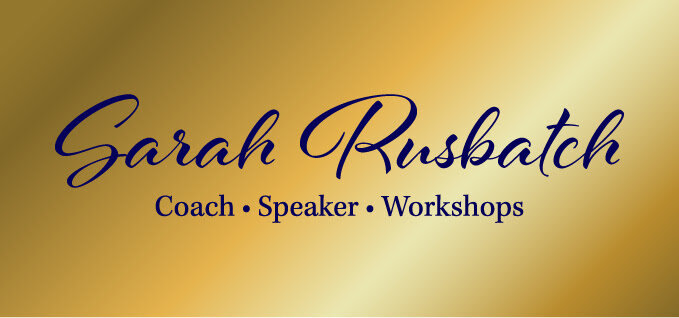How Do We ACTUALLY Stop Sugar Cravings?
You spend the day doing everything right — protein for breakfast, good hydration, a decent, balanced lunch — and then by 3pm, you’re tearing down the pantry to get to the kids’ chocolate muesli bars (or anything sugary you can get your hands on). Sound familiar?
Whether you’re sober, trying to cut back on alcohol, or just aiming for better health, sugar cravings can feel relentless. They don’t just appear out of nowhere — they’re often driven by a combination of physiological, emotional, and habit-based triggers. The good news? Understanding what’s really going on gives you a roadmap to finally beat them.
Why Sugar Cravings Happen
Sugar cravings are not a sign of weakness. They’re your body and brain signalling that something is off. Here’s what’s happening behind the scenes:
Blood sugar rollercoaster
Even if your meals are balanced, long gaps between food or meals that aren’t protein-rich can cause your blood sugar to dip. That dip triggers a strong desire for quick energy — usually in the form of sugary snacks.Neurotransmitter shifts
Sugar triggers the release of dopamine, the “feel-good” neurotransmitter. In early sobriety or when reducing alcohol, your brain may crave that dopamine spike that used to come from a glass of wine. Sugar becomes a replacement, giving a temporary hit of pleasure.Hormone fluctuations
For women over 40, estrogen and progesterone shifts can affect appetite and cravings. Cortisol — your stress hormone — spikes when you’re tired or overwhelmed, and sugar is often the quickest way to calm it down (at least temporarily).Emotional triggers and habits
We often reach for sugar when we’re stressed, bored, anxious, or celebrating. Over time, these emotional patterns become hardwired habits.
Sugar Cravings in Sobriety
If you’ve recently reduced or stopped alcohol, you may notice sugar cravings become more intense. Alcohol and sugar share similar reward pathways in the brain, so it’s common to replace one with the other.
A 2023 study found that people in early sobriety reported an increase in sweet cravings, particularly mid-afternoon.
These cravings can be frustrating, but they’re actually a normal part of rebalancing your brain’s reward system.
Ignoring cravings doesn’t make them go away — you need strategies to respond in ways that satisfy the craving without derailing your health.
How to Beat Sugar Cravings
Here’s the good news: cravings can be managed with a combination of strategies that target your body, brain, and habits.
1. Stabilise Blood Sugar
Keeping your blood sugar steady is the number one way to prevent sugar cravings.
Eat protein at every meal (eggs, Greek yogurt, nuts, fish, chicken).
Include healthy fats and fibre to slow digestion and reduce spikes. Think avocado, chia seeds, vegetables, lentils.
Avoid long gaps between meals — even a small, balanced snack can stop the blood sugar dip that sparks cravings.
2. Manage Dopamine Responsibly
Since sugar triggers the same reward pathways as alcohol, it’s important to give your brain alternatives for pleasure and reward.
Do things that boost dopamine naturally: walk outside, strength train, practice gratitude, or complete a small task you’ve been putting off.
If a sweet treat is really non-negotiable, plan it mindfully — have a small portion and enjoy it fully rather than binging mindlessly.
3. Support Hormones and Stress Levels
Stress and hormone shifts are major drivers of sugar cravings, especially in midlife.
Prioritise sleep — even small improvements (like a consistent bedtime or a wind-down routine) reduce cortisol.
Include stress-reducing practices daily: meditation, breathwork, yoga, or simply a walk in nature.
Keep protein and fibre high, as these nutrients help stabilise hormones that affect hunger and cravings.
4. Address Emotional and Habit Triggers
Many cravings are about more than biology — they’re about emotion and habit.
Keep a craving journal. Note the time, emotion, and context when cravings strike. Awareness is often enough to interrupt the automatic response.
Create alternative coping mechanisms. Reach for herbal tea, a short walk, journaling, or a call to a friend instead of sugar.
Remove the most tempting sugary foods from your immediate environment. Out of sight, out of mind.
5. Use Smart Substitutions
Sometimes you need something sweet, and that’s okay. Smart substitutions help satisfy the craving without a sugar overload.
Fruit: berries, apple slices, or frozen grapes
Dark chocolate (70% or more) in small portions
Yogurt with cinnamon or a sprinkle of cacao
Smoothies with protein powder and fruit
The key is planning — having healthy options ready when the urge hits prevents impulsive grabs from the pantry.
6. Mindset Matters
Finally, be gentle with yourself. Sugar cravings aren’t a failure — they’re signals. Reframing cravings as data rather than guilt helps you respond thoughtfully rather than reactively.
Replace “I shouldn’t eat this” with “What is my body really asking for?”
Celebrate small wins — even a sugar-free afternoon counts.
Recognise that balance, not perfection, is the goal.
Putting It All Together
Putting It All Together
Beating sugar cravings, especially in sobriety, isn’t about willpower alone. It’s about stabilising blood sugar, supporting your brain and hormones, managing stress, and rewiring habits.
A simple daily framework could look like this:
Breakfast: Protein + healthy fat + fiber (e.g., eggs + avocado + greens)
Mid-morning: Movement or short walk to boost dopamine
Lunch: Balanced with protein, fiber, and healthy fat
Afternoon: Planned snack if needed (nuts, Greek yogurt, fruit)
Evening: Wind-down routine, mindful movement, and sleep prep
When cravings strike, pause. Ask: “Am I truly hungry? Am I stressed? Or is this habit?” Then respond with intention. Over time, these small choices rewire your brain’s reward system, reduce cravings, and help you feel in control. Learn more in my Thrive After 40 program! Check HERE for details.

